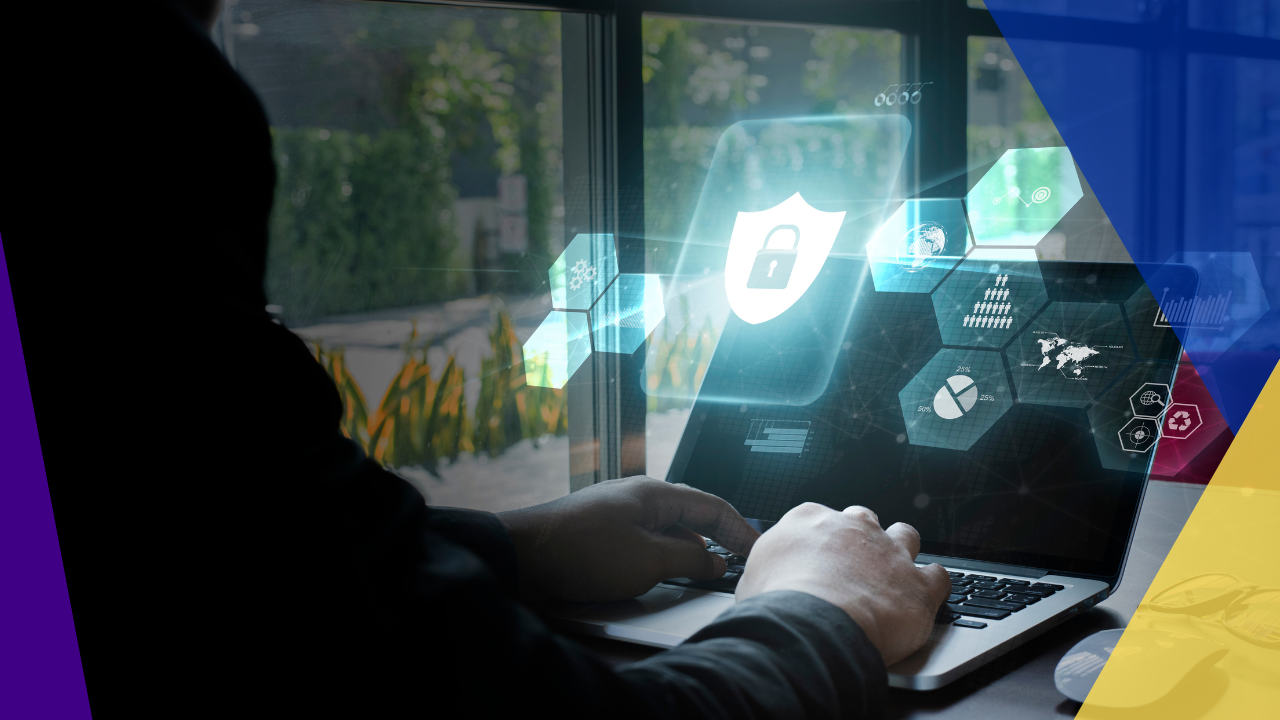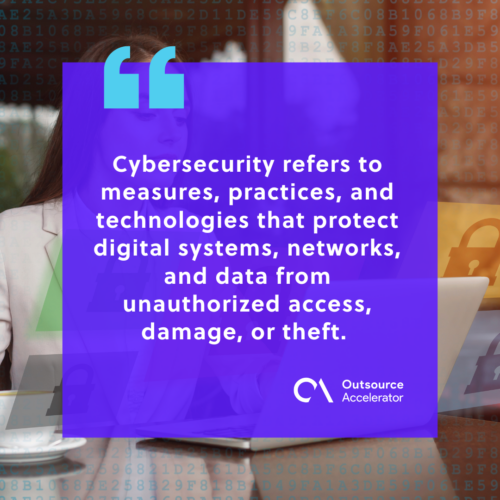Cybersecurity best practices: Protecting your business from emerging threats

Ensuring robust cybersecurity measures is of utmost importance for businesses of all sizes.
The ever-increasing reliance on technology has opened the doors to various cybersecurity threats. These threats can have severe consequences for enterprises.
From data breaches to ransomware attacks, no organization is entirely immune. According to Cloudwards, companies experience cyber attacks every 11 to 14 seconds.
This highlights the importance of implementing comprehensive cybersecurity best practices.
In this article, we’ll delve into cybersecurity and explore the most prevalent emerging threats. We’ll also outline ten effective best practices to fortify your organization’s digital defenses.
Understanding cybersecurity
Cybersecurity refers to measures, practices, and technologies that protect digital systems, networks, and data from unauthorized access, damage, or theft.
The tactics employed by cybercriminals continue to advance along with technology. This is why cybersecurity professionals work tirelessly to stay ahead of these threats.
Businesses must also play their part in mitigating the risks.

Emerging cybersecurity threats
The landscape of cybersecurity threats is constantly evolving. New risks are emerging regularly. Some of the key threats that businesses need to be aware of include:
- Phishing attacks. These involve using deceptive emails or messages to trick individuals into revealing sensitive information or downloading malicious software.
- Ransomware. Ransomware is malware that encrypts files or locks computer systems. It demands a ransom payment in exchange for restoring access.
- Social engineering. This refers to manipulating individuals through psychological tactics. It aims to gain unauthorized access to systems or obtain sensitive information.
- IoT vulnerabilities. With more devices connected to the internet, the risk of IoT vulnerabilities increases. Hackers can exploit vulnerabilities in connected devices to gain access to networks.
- Insider threats. Insider threats can come from current or former employees. They may intentionally or unintentionally compromise the organization’s systems or data security.
- Zero-day exploits. This attack targets software vulnerabilities unknown to the vendor. It leaves businesses vulnerable until the vendor releases a patch.
- Advanced persistent threats (APTs). APTs are sophisticated, long-term cyber-attacks. They aim to gain unauthorized access to sensitive information while remaining undetected.
- Supply chain attacks. These attacks exploit third-party vendors’ vulnerabilities to access a target organization’s systems.
10 cybersecurity best practices for your business
Now that we understand the emerging threats, let’s explore ten cybersecurity best practices that can bolster your organization’s security:
1. Conducting a comprehensive risk assessment
Begin by identifying the potential cybersecurity risks your business may face. This assessment will help you understand your vulnerabilities and develop targeted mitigation strategies.
2. Implementing robust security measures
Deploy a multi-layered security approach that includes firewalls, antivirus software, intrusion detection systems, and strong access controls.
Regularly update and patch security software to protect against the latest cyber threats.
3. Securing the network infrastructure
Secure your network by using strong passwords, disabling unnecessary services, and segmenting your network to limit unauthorized access.
Consider implementing network monitoring tools to detect and respond to suspicious activities.
4. Keeping software and systems updated
Regularly update your company’s applications, software, and operating systems with the latest security patches. Outdated software can be vulnerable to known exploits, making it easier for cybercriminals to infiltrate your systems.
5. Training employees on cybersecurity awareness
Teach your employees about cybersecurity risks and best practices. Train them to identify and report suspicious emails, use strong passwords, and follow secure data handling practices.
Employees should be the first line of defense against cyber attacks.
6. Data protection and encryption
Your firm’s sensitive data should be encrypted in transit and at rest to protect it from unauthorized access. Install data loss prevention measures to track and control how sensitive data is stored and shared.
7. Regular data backups and recovery planning
Develop a robust data backup strategy to ensure critical data is regularly backed up and easily recoverable during a cyber incident.
Test your backup and recovery processes regularly to verify their effectiveness.
8. Monitoring and incident response
Implement real-time monitoring solutions to detect and respond to potential threats promptly.
Establish an incident response plan, so everyone knows what to do in the event of a cybersecurity incident. This helps your business have a rapid and effective response.
9. Collaborating with cybersecurity professionals
Engage with external cybersecurity professionals to assess your security posture. They can conduct vulnerability assessments and provide guidance on best practices.
Their expertise can help you identify blind spots and implement effective security measures.
You can also consider working with outsourcing providers to bolster your cybersecurity measures.
10. Legal and regulatory compliance
Stay informed about relevant cybersecurity laws and regulations that apply to your business. Ensure compliance with data protection regulations depending on your industry.

Implement cybersecurity best practices with Connext
Connext understands the critical nature of cybersecurity for businesses of all sizes.
The outsourcing firm provides comprehensive cybersecurity solutions tailored to your needs, protecting your organization from emerging threats.
Connext is aware of the importance of information security and cybersecurity best practices. It guarantees proper implementation of these concepts, so you won’t have to worry about handling your company’s digital security.
With the BPO’s expertise and cutting-edge technologies, you can stay ahead of cybercriminals and focus on what matters most — the success of your business.
Protect your business and implement cybersecurity best practices with Connext.
Contact Connext today to get started.







 Independent
Independent




